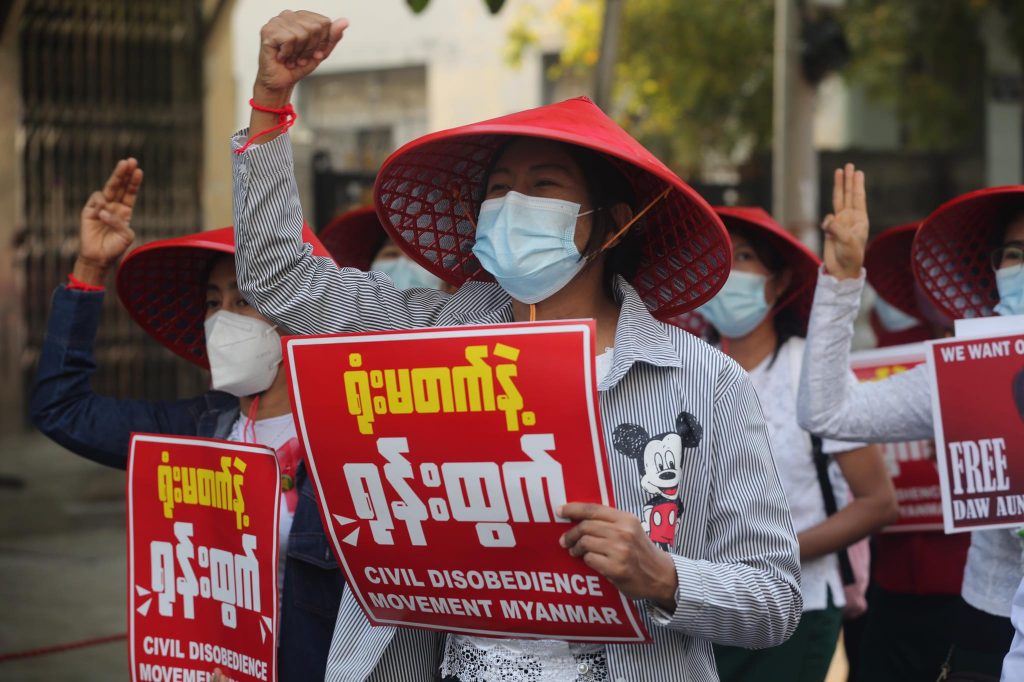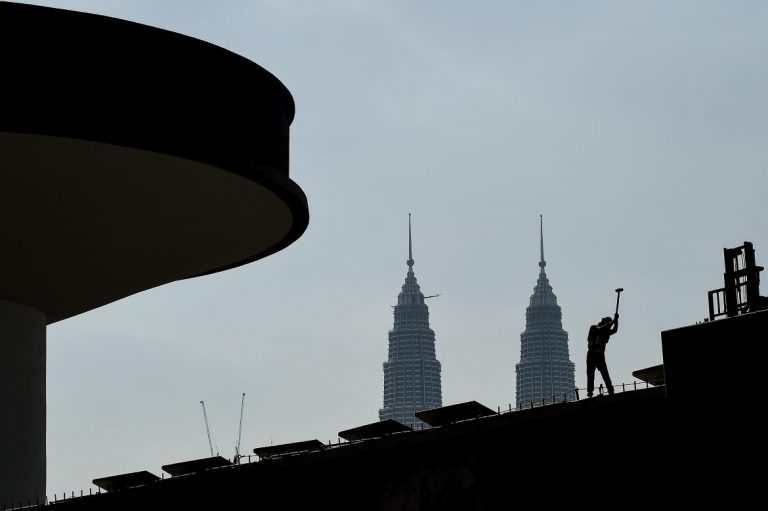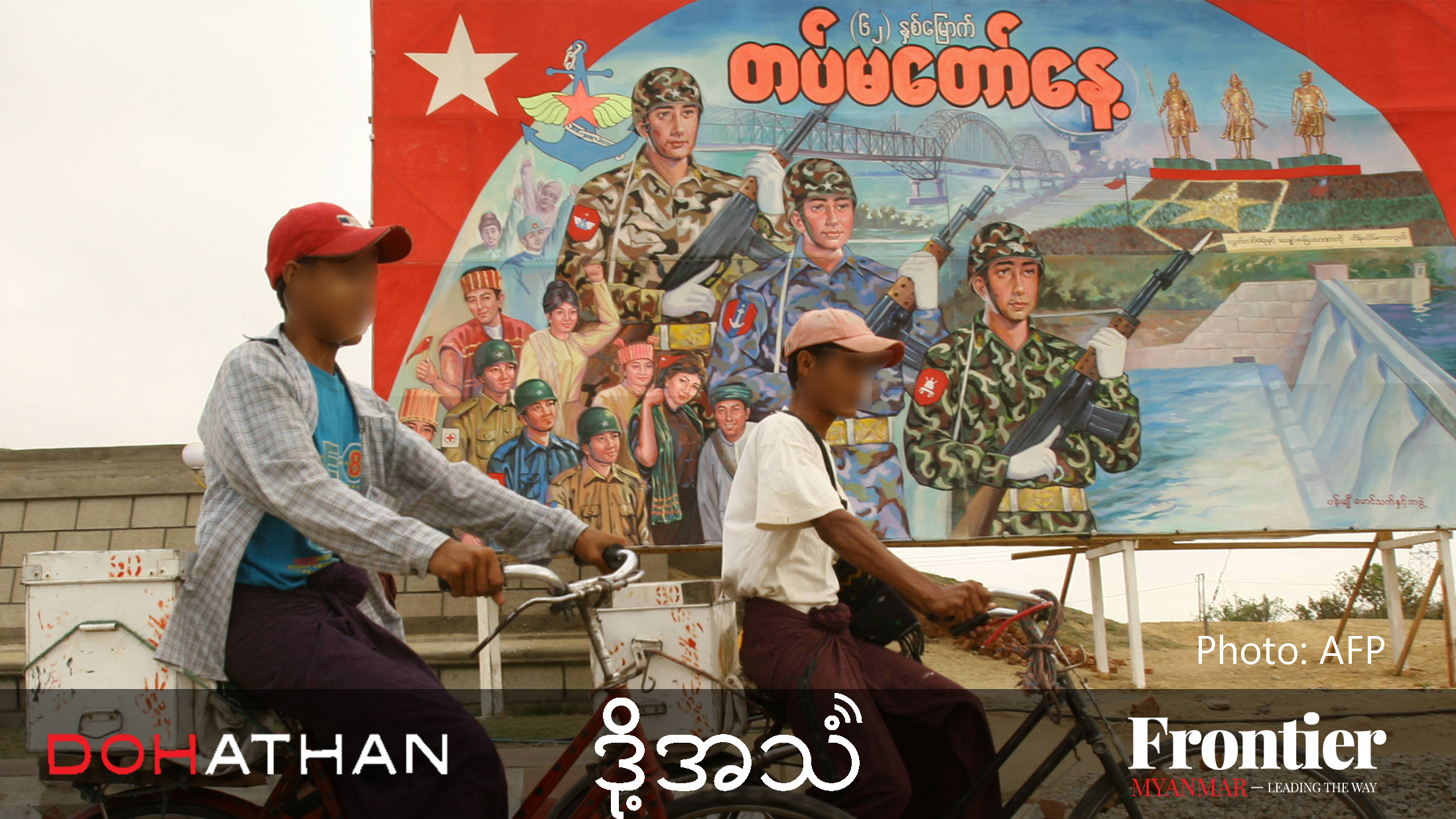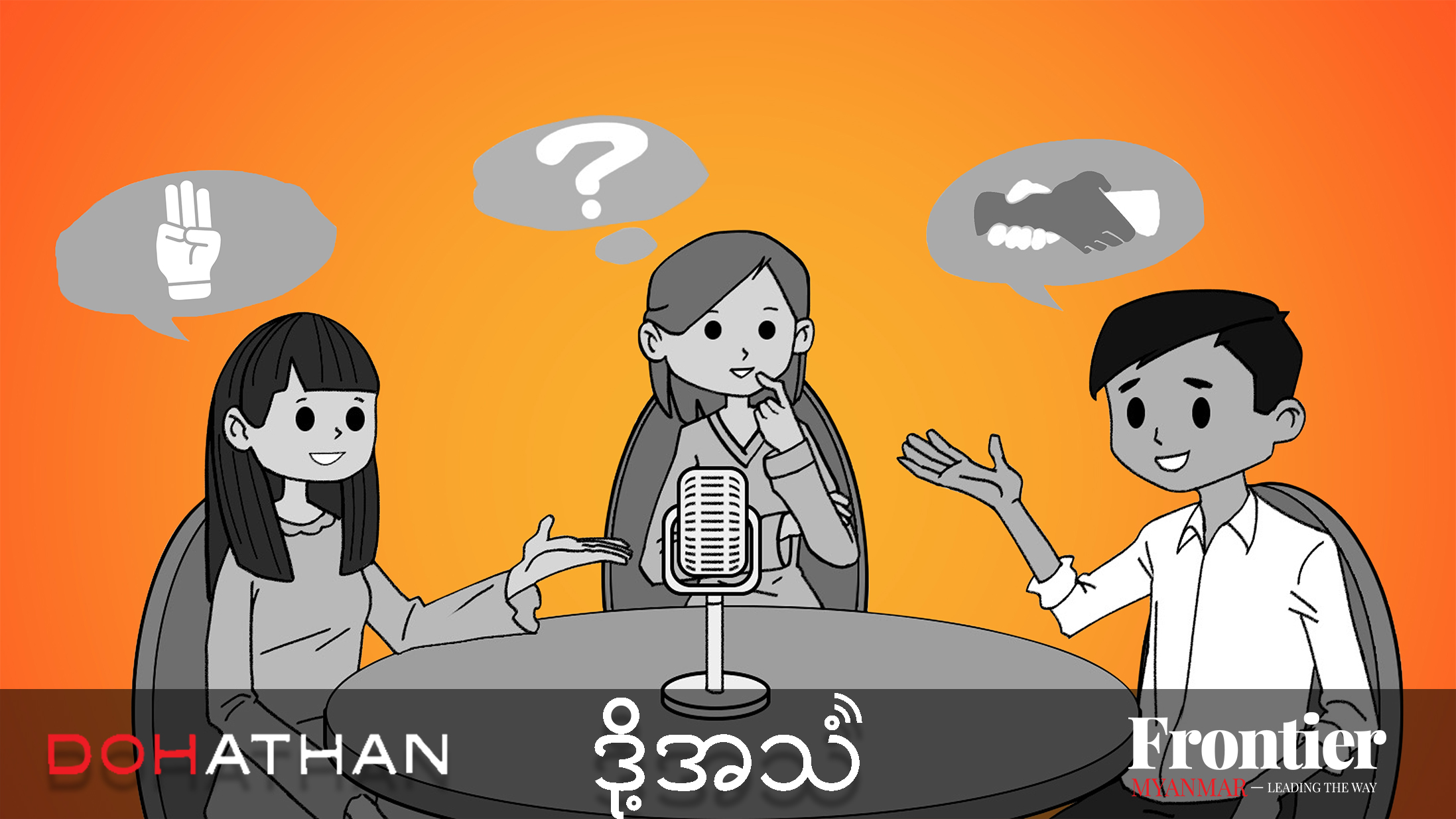The Civil Disobedience Movement must define clear goals, set sustainable strategies and ditch any illusions of foreign intervention if it’s to win its tug-of-war with the Tatmadaw.
By AYE MIN THANT and YAN AUNG | FRONTIER
The people of Myanmar awoke to fear and confusion on February 1 as the Tatmadaw detained national leaders and lawmakers in Nay Pyi Taw ahead of the convening of the new parliament. Despite intermittent internet outages and a lack of information from state-run media, it soon became clear that the Tatmadaw had staged a coup. Within 48 hours, coordinated action against the seizure of power had begun.
As the days wore on, the anti-coup campaign gained a name and a strategy: the Civil Disobedience Movement. Although this non-violent resistance movement was launched by government healthcare workers refusing to show up to work, it is largely an ad hoc campaign organised on the internet with no apparent leader. The CDM has galvanised millions to reject the military takeover of the government through sustained street protests, encouraged a boycott of military-owned or affiliated businesses, and, most vitally, inspired public servants to refuse to comply with directives from the military regime.
A month from the coup, the devastating effect of millions of people working together to sabotage administration and the economy is being keenly felt. The strikes by public servants have slowed international trade to a crawl, government hospitals are having to turn away patients, and the banking system is unable to function, creating a cash crunch.
What happens next will determine whether Myanmar is able to rid itself of the military junta or if millions will suffer pointlessly. There are five key challenges the CDM needs to address in order to win.
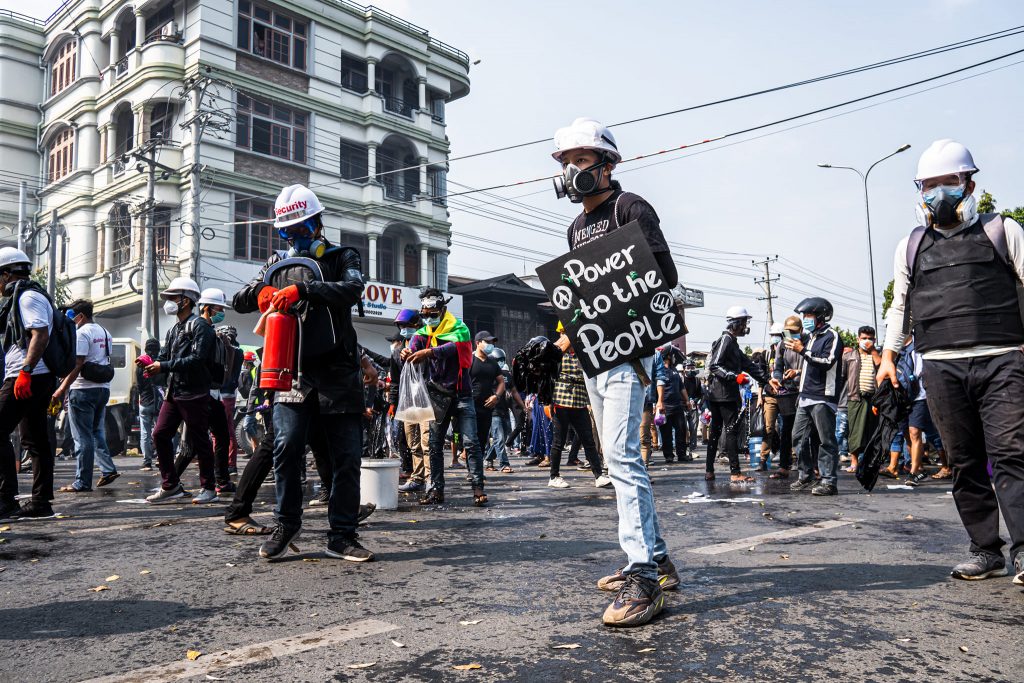
Identifying goals, defining leadership
The first challenge is to clarify and build consensus about what “success” means.
Although there is universal agreement that the CDM rejects the military takeover of government, there is so far no consensus over what the campaign hopes to accomplish should the movement force the military to the negotiating table.
At the moment, people on the streets are demanding paradoxical things. Many are calling for the regime to “respect our votes”, but activists from ethnic and religious minorities are not protesting in support of returning the National League for Democracy to power. Instead, they want to form a federal democracy based on a new or amended constitution.
A lack of consensus is understandable given that the CDM is more than just street protests, a strike by government employees and a boycott of anything associated with the military. It is also a cultural sea change in which a new generation of activists is speaking up and taking the lead without looking to a source of authority for permission or approval.
But without an agreement to pursue inclusive, justice-focused goals, it is easy to envision a future in which the concerns of minorities are again sacrificed for a settlement that the majority can accept, or one in which the movement suffers from infighting and then fails.
The second challenge is the lack of clear leadership to both guide the CDM in its middle phase and be “in the room where it happens” at the end.
Currently it seems that everyone in the CDM is involved with everything, without a clear sense of where each individual and group fits. This is extremely dangerous when confronting an organisation as highly organised and as well-resourced as the military.
If the CDM is successful in forcing the military to back down, the question that needs to be asked is who will represent the people at the negotiating table. A month since the coup, at least three groups, with overlapping but non-identical goals, are competing to be the people’s representative: the Committee Representing the Pyidaungsu Hluttaw, the General Strike Committee, and similarly named General Strike Committee of Nationalities.
The CRPH is a group of MPs-elect from the 2020 election, most of whom are from the NLD. Its members are much older and more politically homogeneous than most of the people protesting on the streets. The committee seeks recognition as the legitimate government and to reverse the coup, taking things back to the way they were on January 31.
The CRPH enjoys considerable support, and an increasing number of townships, wards and village tracts are bypassing the junta’s administrative machinery by forming parallel government structures that answer to the committee. In a dramatic address to the United Nations General Assembly on February 26, Myanmar’s permanent representative to the UN, U Kyaw Moe Tun, publicly declared his allegiance to the people and asked the UN to recognise the CRPH as the legitimate government of Myanmar.
The GSC and the GSCN, on the other hand, lack any purported legal authority and do not have as much support as the CRPH on the streets. However, the GSCN has gained international attention from its letters to China’s ambassador to Myanmar, Mr Chen Hai, and the UN Security Council, that outline its aim of establishing a federal democracy in which ethnic nationalities have equal representation in government. Unsurprisingly, the GSCN is composed of a younger and more ethnically diverse crowd than the CRPH.
A leaderless movement is often more resilient because the arrest or assassination of key members will not stop it. However, the arrests of NLD leaders have left a power vacuum that no single group is able to fill. When the time comes for multilateral discussions to determine the future of the nation, the people will need representatives with a mandate to speak for the CDM and a mechanism to choose those representatives. Without this end game, the protests will be in vain.
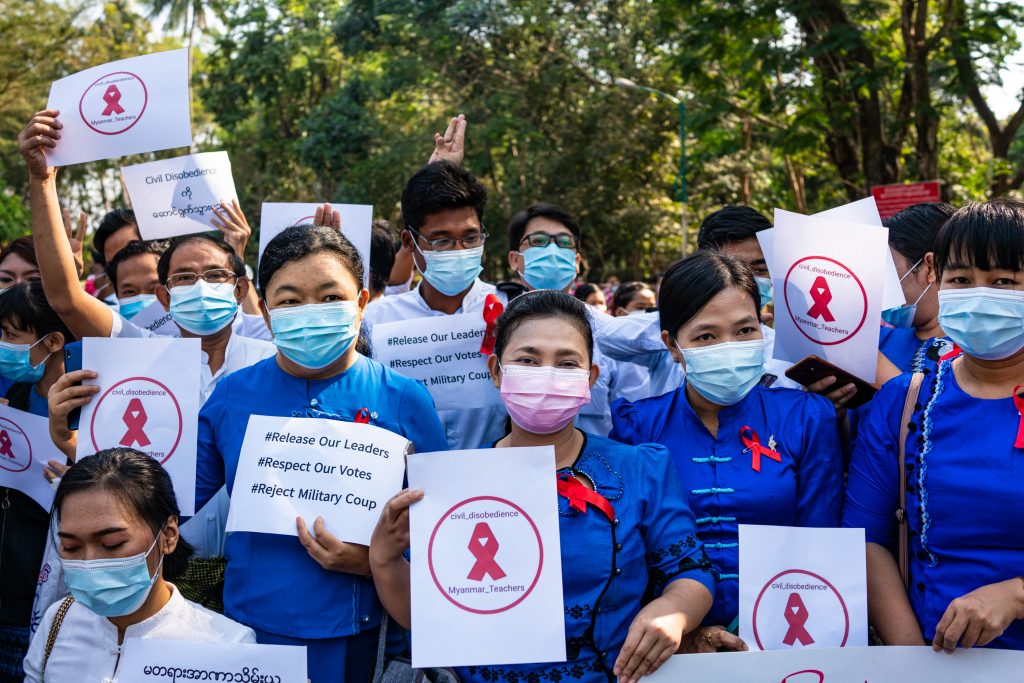
Winning a long-distance race
The third challenge is how to make the CDM sustainable.
Although the CDM has achieved some success with its boycott calls, such as persuading Australian oil and gas giant Woodside Energy to reverse its business-as-usual approach in Myanmar, unstrategic calls for strikes and boycotts could lead to unnecessary suffering and even a backlash.
A general strike that destroys an economy in which many live hand-to-mouth will lose followers very quickly, as well as the funds needed to keep the movement going. The CDM needs to understand that it is not fighting a battle that can be won in weeks. The Tatmadaw has billions of dollars and a huge arsenal at its disposal; the CDM needs to be prepared for months or years of unified discipline if it wishes to win.
Teachers, as important as they are in normal times, can strike without upsetting daily life because government schools remain closed due to COVID-19. However, the pandemic will cause needless death and suffering in Myanmar unless striking medical personnel can establish alternative facilities for treatment in a country with poor healthcare infrastructure.
Assessing the importance of each sector involved in the CDM, and calibrating the movement’s approach accordingly, will be crucial in the coming weeks. The goal should be to inflict maximum harm on the military regime’s ability to function while ensuring the public can still access basic necessities. If the people begin to lose not only income but also electricity, water and household waste collection, living under a military dictatorship may start to look more appealing.
The fourth challenge is how to provide resources to those who need them.
People from all walks of life have been aiding the CDM. The support has ranged from the distribution of free water and snacks to marching protesters to sheltering activists, labour organisers and journalists on the run from the authorities. Even as people flooded onto the streets, basic financial infrastructure was emerging behind the scenes to support striking workers and demonstrators, and citizens have given generously to unregistered funds established by celebrities. Despite all this generosity, there is a problem of trust.
The CDM’s exclusion from legal channels means there is no secure way of connecting the people who need financial support to those providing donations. The Tatmadaw’s long history of using informants and infiltrators means that a donor cannot trust a community fund found on social media. A public servant cannot risk calling that community fund’s hotline. The fund cannot trust that anyone seeking assistance from it is legitimate. This creates a situation in which the well-connected are the best protected and the plight of the already vulnerable becomes more precarious.
These problems need to be dealt with swiftly, given the uncertainty over how long the movement will need to endure. People need to be financially, physically and mentally prepared for it to last a year or even longer. The CDM in a nutshell is a tug-of-war between the people and the military; it is a game of strength, stamina and the ability to work in unison, and the side that cannot hold out indefinitely will lose.
The fifth challenge is the widespread belief in the CDM that the international community can or will #SaveMyanmar.
Since the protests began, participants have been using English-language placards and hashtags, made Facebook pages devoted to translating Burmese language reporting into English, and demonstrated outside embassies and UN offices. Many in Myanmar believe in the image that Western liberal democracies like to project of themselves. They also believe that their appeals for foreign assistance will result in devastating military action against the Tatmadaw. They have seen the drone-guided missile strikes and military occupations undertaken by Western countries in the name of democracy. They expect that similar options are on the table for Myanmar, but they are not.
There is no evidence of political will among the Western countries that have condemned the coup for any kind of military intervention. Sanctions have been imposed on high-level members of the Tatmadaw, but even they took days and a series of meetings before being announced. A global arms embargo may follow, but there will likely be no prosecution of coup leaders on the world stage. Myanmar is not party to the International Criminal Court (a fact that most of the country was seemingly happy about a year ago). The kind of drastic foreign help Myanmar people are hoping for is not coming.
But that does not mean the CDM ought to turn away from the international community. The movement can and should pressure foreign governments and the UN not to recognise the junta and its representatives as the government of Myanmar, and to coordinate multilateral talks aimed at returning power to the Myanmar people.
The CDM should also urge governments to prevent firms from partnering with the Tatmadaw and pressure companies operating in Myanmar to protect the right of their workers to organise and participate in protests. The CDM needs to position itself as the leader of an internationally backed movement against military rule in Myanmar, and not play the role of a victim bravely fighting while waiting for reinforcements to arrive.
The people are the source of power and offer the path to success. Myanmar’s future is not, and should not be, in the hands of the international community. The Myanmar people, through solidarity and alliances between long-divided communities, have a chance to build a better, stronger Union – one that holds a brighter future for all citizens regardless of ethnicity, religion, gender and sexual orientation.
But for the Spring Revolution to succeed, a robust debate over strategy is essential. Now, more than ever, amid the chaos created by the coup, the people of Myanmar have an opportunity to establish a true democracy.
Aye Min Thant is a Pulitzer-prizewinning journalist based in Myanmar.
Yan Aung is a full-time protester and part-time policy specialist.


